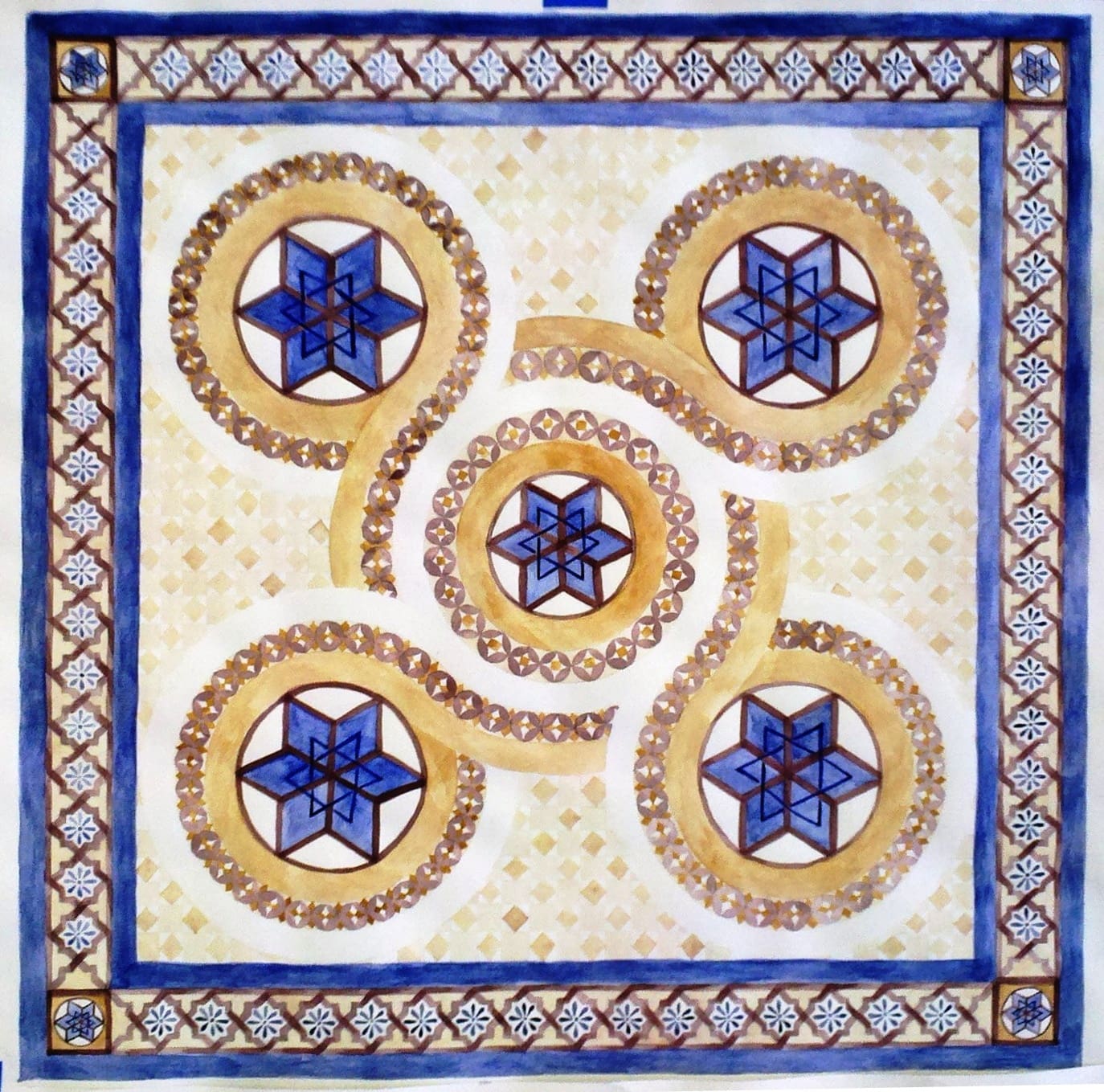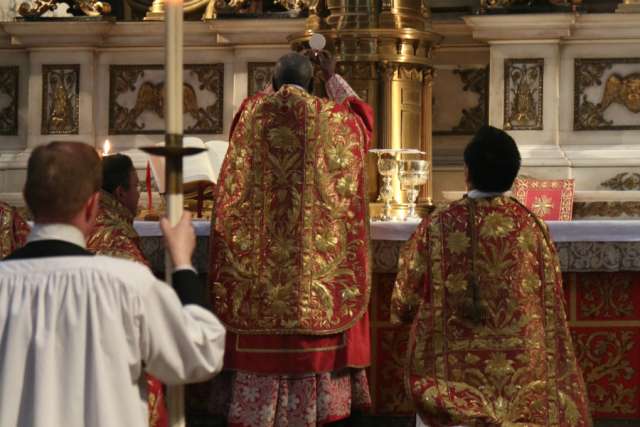Q: Is there a theology of church floor design?
A: Though it might at first seem surprising, church floors are a potent part of the symbol system of a church building, which is itself a visible image of the Heavenly Jerusalem, the place of true worship which includes the new heaven and the new earth mentioned in the Book of Revelation.
A church floor signifies theological realities in three principal ways. First, heaven is described as a city with walls and gates made of gold and covered with gems, indicating the glory of many living stones assembled into the image of Christ himself. Similarly, the streets of this heavenly city are described as “pure gold, clear as crystal” (Rev 21:21). To walk on a church floor, then, is to walk sacramentally on the “streets” of heaven which lead to Christ enthroned. Fine materials and gem-like colors arranged in carefullydesigned patterns have been used in the great tradition to signify these glorified streets.
Second, this same choice of material and pattern can indicate the theological importance of different parts of the church. Just as the altar itself ought to be given the most precious materials and finest workmanship because it symbolizes Christ himself, so the flooring material of the sanctuary ought to be the richest and most carefully designed of the entire church (high-quality wood or marble flooring, for instance). Lesser materials and simpler designs would be used in the nave, under pews, and in the narthex, each according to its inherent dignity. Similarly, elaborated floor patterns would be specified around important focal points of the liturgical and devotion action: the altar, baptistery, tabernacle, and shrines, for example.
Lastly, particular attention ought to be paid to the primary aisles of a church. In the rites of the Church, the layperson approaches the sanctuary to receive Holy Communion in what is called the “Communion Procession,” and is indeed part of the ritual action like other processions. As such, the flooring of a church’s aisle indicates the privileged path of the pilgrim Church anticipating the heavenly banquet by way of the sacraments. It is a path unlike any other path and as such receives careful and elevated design and materials.
A key issue for any decision about church floors is that they are to have an ecclesiastical character. Institutional carpeting or domestic-looking tile have a hard time providing ecclesiastical character because they are not good indicators of heavenly perfection. However, a church floor need not be covered in crosses or ecclesiastical symbols in order to be ecclesial. When a church floor indicates order, gem-like radiance, permanence and eschatological glory, it will be suitable for a church because it signifies the heavenly kingdom and contributes to the symbolism of the church building itself.
Answered by Denis McNamara


